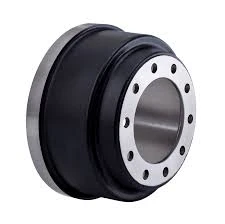
-
 Afrikaans
Afrikaans -
 Albanian
Albanian -
 Amharic
Amharic -
 Arabic
Arabic -
 Armenian
Armenian -
 Azerbaijani
Azerbaijani -
 Basque
Basque -
 Belarusian
Belarusian -
 Bengali
Bengali -
 Bosnian
Bosnian -
 Bulgarian
Bulgarian -
 Catalan
Catalan -
 Cebuano
Cebuano -
 Corsican
Corsican -
 Croatian
Croatian -
 Czech
Czech -
 Danish
Danish -
 Dutch
Dutch -
 انګلیسي
انګلیسي -
 Esperanto
Esperanto -
 Estonian
Estonian -
 Finnish
Finnish -
 French
French -
 Frisian
Frisian -
 Galician
Galician -
 Georgian
Georgian -
 German
German -
 Greek
Greek -
 Gujarati
Gujarati -
 Haitian Creole
Haitian Creole -
 hausa
hausa -
 hawaiian
hawaiian -
 Hebrew
Hebrew -
 Hindi
Hindi -
 Miao
Miao -
 Hungarian
Hungarian -
 Icelandic
Icelandic -
 igbo
igbo -
 Indonesian
Indonesian -
 irish
irish -
 Italian
Italian -
 Japanese
Japanese -
 Javanese
Javanese -
 Kannada
Kannada -
 kazakh
kazakh -
 Khmer
Khmer -
 Rwandese
Rwandese -
 Korean
Korean -
 Kurdish
Kurdish -
 Kyrgyz
Kyrgyz -
 Lao
Lao -
 Latin
Latin -
 Latvian
Latvian -
 Lithuanian
Lithuanian -
 Luxembourgish
Luxembourgish -
 Macedonian
Macedonian -
 Malgashi
Malgashi -
 Malay
Malay -
 Malayalam
Malayalam -
 Maltese
Maltese -
 Maori
Maori -
 Marathi
Marathi -
 Mongolian
Mongolian -
 Myanmar
Myanmar -
 Nepali
Nepali -
 Norwegian
Norwegian -
 Norwegian
Norwegian -
 Occitan
Occitan -
 Pashto
Pashto -
 Persian
Persian -
 Polish
Polish -
 Portuguese
Portuguese -
 Punjabi
Punjabi -
 Romanian
Romanian -
 Russian
Russian -
 Samoan
Samoan -
 Scottish Gaelic
Scottish Gaelic -
 Serbian
Serbian -
 Sesotho
Sesotho -
 Shona
Shona -
 Sindhi
Sindhi -
 Sinhala
Sinhala -
 Slovak
Slovak -
 Slovenian
Slovenian -
 Somali
Somali -
 Spanish
Spanish -
 Sundanese
Sundanese -
 Swahili
Swahili -
 Swedish
Swedish -
 Tagalog
Tagalog -
 Tajik
Tajik -
 Tamil
Tamil -
 Tatar
Tatar -
 Telugu
Telugu -
 Thai
Thai -
 Turkish
Turkish -
 Turkmen
Turkmen -
 Ukrainian
Ukrainian -
 Urdu
Urdu -
 Uighur
Uighur -
 Uzbek
Uzbek -
 Vietnamese
Vietnamese -
 Welsh
Welsh -
 Bantu
Bantu -
 Yiddish
Yiddish -
 Yoruba
Yoruba -
 Zulu
Zulu
Understanding the Structure and Functionality of Drum Brake Systems in Automotive Engineering
Understanding Drum Brakes A Comprehensive Overview
Drum brakes have been a crucial component in modern vehicles, offering reliable stopping power and efficiency for many decades. Despite the advent of disc brakes in recent years, drum brakes remain popular in specific applications, including compact cars, motorcycles, and heavier vehicles such as trucks. This article aims to explain the fundamental workings of drum brakes through a detailed overview of their components and operation, as highlighted in typical drum brake diagrams.
Components of Drum Brakes
A drum brake system consists of several key components that work together to ensure effective braking. These components include
1. Brake Drum A cylindrical component that rotates with the wheel. The inner surface of the drum provides a friction surface for the brake shoes.
2. Brake Shoes These are curved devices that press against the inside of the brake drum to create friction. The shoes are lined with a friction material that converts kinetic energy into thermal energy, which slows down the vehicle.
4. Return Springs These springs are essential for returning the brake shoes to their original position after the brake pedal is released, ensuring that they do not drag against the drum when not in use.
5. Adjuster This component automatically adjusts the positioning of the brake shoes as they wear down, maintaining optimal distance from the drum to ensure effective braking.
drum brakes diagram

Operating Principles
The operation of drum brakes is primarily hydraulic. When a driver presses the brake pedal, hydraulic fluid is forced through the brake lines to the wheel cylinder. The increase in hydraulic pressure pushes the pistons inside the wheel cylinder outward. As the pistons move, they push the brake shoes against the inner surface of the brake drum.
This contact generates friction, which slows down the rotation of the drum and, consequently, the wheel. The design of the drum brake allows for a significant amount of surface area to come into contact with the drum, providing powerful braking force. As the brake wears down, the adjuster mechanism compensates for the reduced distance between the brake shoes and drum, ensuring consistent performance over time.
Advantages and Disadvantages
Drum brakes have several advantages that contribute to their continued use in various vehicles. They generally offer better stopping power in specific conditions, such as wet weather. The enclosed design of the drum protects the braking components from dirt and moisture, reducing the likelihood of brake fade.
However, drum brakes also come with some disadvantages. They tend to be heavier than disc brakes, which can impact fuel efficiency. Additionally, drum brakes can be more challenging to service and may have longer braking distances compared to modern disc brakes, particularly in high-performance scenarios.
Applications and Future
Today, drum brakes are commonly found on the rear wheels of many vehicles and are still used extensively in commercial vehicles and applications where heavy loads are involved. As advancements in braking technology continue to evolve, the future of drum brakes may involve hybrid systems, effectively combining the strengths of drum and disc designs.
In summary, the diagram of drum brakes serves as an excellent educational tool for understanding how each component interacts within the system. By grasping these concepts, one can appreciate the significance of drum brakes in vehicle safety and performance, despite the increasing popularity of alternative braking systems.
-
Why Choosing the Right Brake Drum Manufacturer Matters for Vehicle Safety and PerformanceخبرونهJun.05,2025
-
Understanding Heavy Duty Brake Drums: Key to Truck Safety and PerformanceخبرونهJun.05,2025
-
Reliable Braking Systems: Rear and Trailer Drum Brake Solutions for Heavy-Duty ApplicationsخبرونهJun.05,2025
-
Power and Precision: Why Brake Drums Still Dominate in Vehicle Safety SystemsخبرونهJun.05,2025
-
Brake Drums: Essential Components for Vehicle Safety and PerformanceخبرونهJun.05,2025
-
Superior Brake Drums & Rotors for Reliable Stopping PowerخبرونهJun.03,2025
-
Premium Brake Drums for Maximum Stopping PowerخبرونهJun.03,2025
